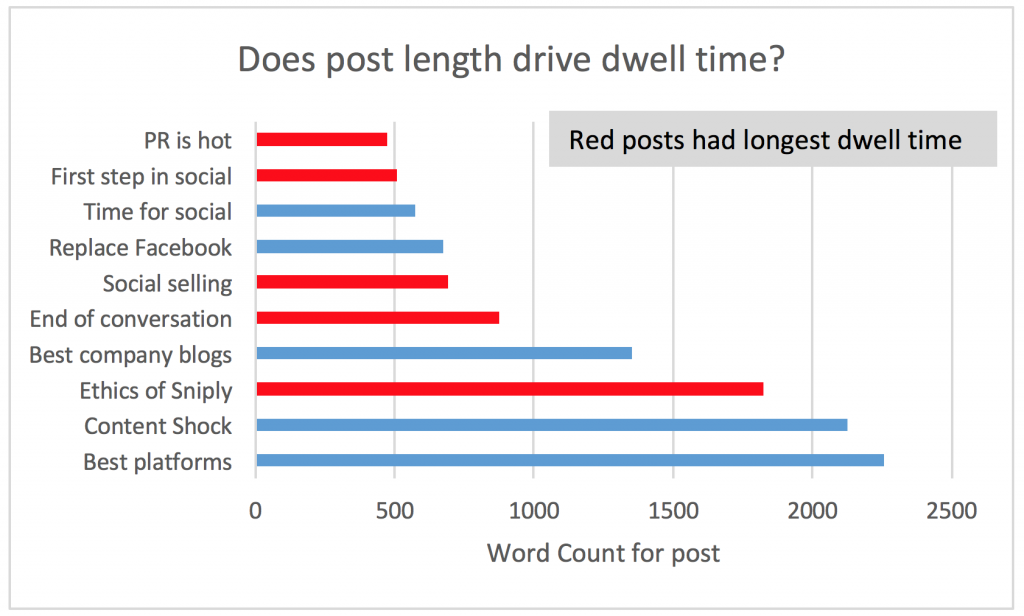
I’m a big fan of the New York Times. Not only do they lead the way with the best in American journalism and commentary, they also are innovators in their approach to marketing articles to get them to move.
And as you know by now, my strong view is that we must get our content to move. In fact the economic value of all that content you’re producing is exactly zero … unless people see it and share it.
So a recent post by the New York Times that reported its most popular posts of 2015 by dwell time got my attention.
Dwell time is the amount of time people spend viewing your content. This measure is particularly noteworthy in today’s marketing environment because we know that Facebook has changed their EdgeRank algorithm to acknowledge this metric.
Like most people, I have historically judged a success of a piece of content by its page views. Naturally more people viewing my content would be a sign that it is successfully “moving,” right?
But if the New York Times is judging success by dwell time and Facebook is rewarding it, perhaps we need to reconsider how we are measuring content marketing success.
A metric revelation
Naturally I wanted to see what would happen if I compared my most-viewed blog posts of 2015 with the posts that people spent the most time viewing. Here is the comparison of the top five posts by views and dwell time:

Well. My most popular posts by page views versus dwell time is mutually exclusive. I was kind of hoping for some overlap, but no such luck!
This is a small sample size but at least looking at the top five most-viewed posts for 2015, none of them also made the top five in dwell time.
The next natural question is, how long are these posts? Do people spend the most amount of time on the longest blog posts? That would make sense, right?
Well perhaps nothing about this investigation makes sense …

This chart shows that four of the six shortest posts received the most dwell time from my readers. Huh?
Further, three out of the four longest posts did not make the top five list for dwell time (the red bars). Are people just skimming the long stuff?
Unraveling dwell time
Now that I thoroughly confused you, let’s review what we can conclude about dwell time.
- Dwell time is probably the most important metric you’re not measuring. It’s a key measure today because Facebook (and presumably the other social platforms) rewards content that attracts reader attention for a longer time.
- Dwell time is a signal that people are actually consuming your content, which is a leading indicator of advocacy.
- This is a small sample size … too small to make over-arching conclusions … but creating longer posts may not necessarily have an effect on how much people read them!
It might be worth doing your own content comparison. This is easily accomplished by going into Google Analytics and sorting your pages of content by clicking on both page views and average time on page:

The best content measure would be something that combines content movement with content viewing — but more on that in an upcoming post!
Your thoughts on the importance of dwell time?
Illustration courtesy Flickr CC and Mike Licht



